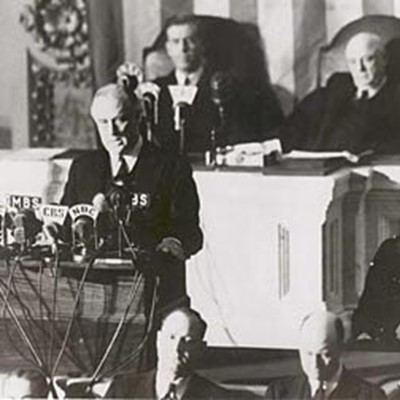
The chance to pitch to your company’s senior leadership or get in front a potential client is an opportunity you want to make the most of—obviously.
Yet, when we workshop presentations with individuals and groups, we see common mistakes in the way speakers go about this.
They're on the brink of blowing the opportunity, despite all the hard work.
These mistakes, at best, try the patience of valuable audience members. At worst, they diminish the speaker in the eyes of the very people the speaker hopes to impress.
"If you’re in a position to present to the most senior executives in your organization, you’re already considered smart and capable. You don’t need to prove it by sharing endless details."
– Executive coach Sabina Nawaz writing for the Harvard Business Review
That’s why we were excited to come across this short article in the Harvard Business Review that’s packed with good advice. Executive coach Sabina Nawaz identifies four traps to avoid if you’re pitching the C-Suite:
- An Idea Without Its Problem
- An Idea Without a Clear ROI
- A Presentation Without Interaction
- Data Without Attention to Detail
To her advice, we add these tips from our experience:
1. Open strong, with a clear statement about the value of what you’re presenting.
Nawaz talks about the importance of identifying the problem you’re solving and demonstrating the return on investment.
We say, don’t bury that information under a pile of background material. Give us at least a hint up front.
Think like the audience: They have many concerns. Why does the problem you’ve identified deserve their attention? What have you got that can benefit them?
2. As for that background info—limit it!
We’ve seen account reps from advertising agencies open with an explanation of the value of marketing, in a general sense. To which we say: Don’t you think your client understands the value of marketing? Else why would you be here?
Decision makers may need some background, but they’re not college students working on an MBA. Cut to the new information—what you’ve discovered, what you offer. Take a hard look at the background you’re including. Whittle it down to the essentials, only what your target audience needs to understand the value of your proposal.
3. Anticipate the challenges.
Whenever you present to decision makers, you should expect questions—and not at the end of your presentation. Decision makers get to ask questions whenever they want.
Your job is to answer those questions, identify what you need to find out, and advance your presentation if their questions indicate you’re taking too long to get to the stuff they care about.
How do you do that? By prepping in advance. Brainstorm the questions you think you’ll get. Run your presentation by others and get their questions. Analyze every claim you make and be ready to explain how you arrived at that conclusion.
4. Design your presentation to appeal to them, not you.
All presenters are advised to think like the audience, to understand where they’re coming from. But when you are pitching to senior executives or clients, this becomes so much more important.
They’re not your captive audience, peers, or direct reports who have to endure whatever you've got. Because you want something from them:
- Figure out their priorities. They may not be the same as yours.
- Find out how they like to receive information. For example, if they hate PowerPoint, you’d be foolish to show up with a massive deck of slides.
- Don’t do a data dump. Be selective. Provide the most important information and put it into context: Why does it matter? What does it mean?
You'll find more on how to prepare for questions here--and that Harvard Business Review article here.






